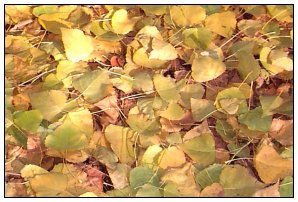 Medford Station 1: Trees with Wet Feet
Medford Station 1: Trees with Wet Feet
Medford Station 1: Trees with Wet Feet

Sewage and runoff from agricultural fields into a stream can supply an excess of nutrients, creating problems for aquatic wildlife. Streamside plants can improve water quality by absorbing these nutrients. In times of flooding, vegetation slows the flood-borne materials, minimizing damage. Shading the stream helps keep water temperatures in the range fish and other aquatic species require.
FEW TREES ARE ABLE to withstand the soggy soil condition found along streams. Along the Greenway, the bigleaf maple, Oregon ash (Fraxinus latifolia), black cottonwood (Populus trichocarpa), white alder (Albus rhombifolia), and willow (Salix sp.) are the only trees that can tolerate the low oxygen conditions created by saturated soil and flooding. This riparian vegetation is important because it helps protect water quality and the habitats of aquatic species. The Greenway is unusual in that the wetlands are being preserved, not destroyed.
White alder has a quick growth and a relatively short life span, as do most riparian trees. Alder roots have nodules that fix nitrogen, making this nutrient available to other plants. Local residents still follow the Native American practice of using alder wood to cook and smoke salmon. In the winter, look for the small brown cones hanging from its bare branches.
Because of the availablility of water along the creek, the cottonwood produces a vast network of surface roots. As you travel this trail, look for the roots of the cottonwood tree breaking through the asphalt. At eye level, look for shelf fungus, the kind that grows on the trunks of dead or dying trees and helps convert them back into soil. In addition, you may find the nests of some of the most common birds that live along the Greenway. Look for the flat stick next of the scrub jay, the grassy mud-lined robin's nest, the hanging basket of the northern oriole, or the numerous cavities excavated by woodpeckers and flickers.

